Best places to visit in India
India with its spectacular monuments and
towering forts, lofty hill stations, tea plantations and more, it's hard
to choose which places to visit. To help you make this tricky decision,
we've listed some of the best places to visit in India below.
Best places to visit in India: Our pick #1 - The Taj Mahal
One of the Seven Wonders of the Modern World and an enduring
Indian icon, the Taj Mahal in Agra was built by Mughal Emperor Shah
Jahan in memory of his wife, Mumtaz mahal. Mumtaz died in 1631, giving
birth to their 14th child. In her dying breath she urged Shah Jahan
build a mausoleum for her, more beautiful than any the world had ever
seen. In 1632 building began on the world’s greatest monument to love,
which, even today, undoubtedly has no peer.
Mumtaz Mahal, an inseparable companion of Shah Jahan, died in 1631, while giving birth to their 14th child. It was in the memory of his beloved wife that Shah Jahan built a magnificent monument as a tribute to her, which we today know as the "Taj Mahal". The construction of Taj Mahal started in the year 1631. Masons, stonecutters, inlayers, carvers, painters, calligraphers, dome-builders and other artisans were requisitioned from the whole of the empire and also from Central Asia and Iran, and it took approximately 22 years to build what we see today. An epitome of love, it made use of the services of 22,000 laborers and 1,000 elephants. The monument was built entirely out of white marble, which was brought in from all over India and central Asia. After an expenditure of approximately 32 million rupees (approx US $68000), Taj Mahal was finally completed in the year 1653.
It was soon after the completion of Taj Mahal that Shah Jahan was deposed by his own son Aurangzeb and was put under house arrest at nearby Agra Fort. Shah Jahan, himself also, lies entombed in this mausoleum along with his wife. Moving further down the history, it was at the end of the 19th century that British Viceroy Lord Curzon ordered a sweeping restoration project, which was completed in 1908, as a measure to restore what was lost during the Indian rebellion of 1857: Taj being blemished by British soldiers and government officials who also deprived the monument of its immaculate beauty by chiseling out precious stones and lapis lazuli from its walls. Also, the British style lawns that we see today adding on to the beauty of Taj were remodeled around the same time. Despite prevailing controversies, past and present threats from Indo-Pak war and environmental pollution, this epitome of love continuous to shine and attract people from all over the world.
Best places to visit in India: Our pick #2 - Amritsar
Holy Amritsar, located in the northwest part of India in the
State of Punjab, is the holy centre of the Sikh religion.
Amritsar’s main attraction is the revered and beautiful Golden Temple
made of white marble, bronze and gold leaf. Maharaja Ranjit Singh built
this seat of Sikh religion in 1803. The Golden Temple has four
entrances and the walls are inlaid with semi-precious stones in floral
patterns, frescoes and glasswork. To enter the temple, one must don a
traditional headscarf, wade through a shallow pool (a purification
ritual) and merge with the mass of bodies that circle the embankment
around the holy structure.
Best places to visit in India: Our pick #3 - Jaipur
A flamboyant showcase of Rajasthani architecture, the vibrant
capital of Rajasthan is popularly known as the ‘Pink City’. Jaipur was
chosen by Maharaja Jai Singh II (1693-1743) for his capital. A skilled
astronomer and visionary, he worked with superb Bengali architect
Vidyadhar Bhattacharya to complete design and construction of Jaipur in
less than eight years.
The 18th century Jantar Mantar is the largest and best preserved of five
observatories built by the astronomer prince. The observatory complex
is fascinating. Jai Singh II had the huge stone structures built to
measure time, chart the declination of celestial bodies and predict
eclipses. Other must-sees within the city include the City Palace
Complex. The palace is a blend of Rajasthani and Mughal architecture.
The son of the last maharaja and his family still reside in a wing of
the palace.
Best places to visit in India: Our pick #4 - Darjeeling
Sitting at a spectacular altitude of nearly 2200m with a
backdrop consisting of mighty snow-clad Himalayan peaks and surrounded
by verdant tea plantations, the scenic hill-station of Darjeeling in the
state of West Bengal offers pleasant respite from India’s oppressive
summer heat.
The main attractions include a number of Buddhist monasteries including
Ghoom, lush tea plantations, faded relics from the Raj, colourful
markets and trekking possibilities in the surrounding area. From
mid-April until the end of June, it’s usually possible to see Mount
Kanchenjunga, the third-highest mountain on Earth, from town. The best
view is at sunrise from the top of Tiger Hill, 7 miles away. An
entertaining way to reach Darjeeling is on the famous “toy train”,
climbing more than 8,000 ft, over 8 hours, along a narrow-gauge track
before reaching the city.
Best places to visit in India: Our pick #5 - Jaisalmer
Jaisalmer, the medieval walled sandstone town that perches
dramatically on a flat-topped hill, is exotic, remote and beautiful. Set
so deep in the heart of the Thar Desert that one would expect barren
near-desolation, this frontier town is today one of Rajasthan's
best-loved tourist destinations. Local colour and warmth prevail over
the inhospitable terrain. The old fort city rises up just like a giant
sandcastle, its ancient streets and alleyways still preserving a
traditional way of life. About a quarter of the old city’s population
resides within the fort walls. Entry is through a forbidding series of
gargantuan gates leading to a long courtyard. Off here are a tangle of
alleyways and streets lined with little shops, Jain temples and the old
palace of the former ruler, a portion of which is open to the public.
Camel safaris in the close and surrounding desert are a popular
activity. In January/February, the Jaisalmer Desert Festival has camel races, folk music, dancing and singing and attracts hoards of colourfully dressed Rajasthanis.
Best places to visit in India: Our pick #6 - Delhi
Ancient and modern India collides with startling results in
Delhi, the nation’s capital and third-largest city (population of
10,000,000). While you may stay in a gleaming high-rise hotel with all
the latest conveniences, you can step outside and see a lawnmower pulled
by a bullock. Officially two separate cities, the old city of Delhi and
New Delhi are really two parts of one sprawling metropolis. New Delhi,
largely built by the British, is clean and modern with broad, tree-lined
boulevards. Old Delhi, considerably less clean, is noted for
spectacular Mughal architecture dating to the 10th century. The
juxtapositions are, of course, what makes this city so fascinating.
Travellers will find that its long history and mix of cultures have
spawned an array of architectural styles, religious sites, eclectic
museums and sumptuous cuisines.
Best places to visit in India: Our pick #7 - Goa
Thanks to its picturesque location on the Mandovi River,
between the Western Ghats and the Arabian Sea and its large stretch of
magnificent, palm tree-lined beaches, Goa is one of India’s hot spots.
The Portuguese, claimed Goa as the seat of the Catholic Church in the
East and controlled the area until 1961, when India invaded to liberate
it. The state’s Portuguese past is most apparent in its plazas,
cathedrals and architecture including the Catholic Church of Old Goa,
St. Anne’s Church and the Basilica of Bom Jesus. The surrounding
countryside is dotted with luxurious old estates built by wealthy
Indians, including Braganza Palace which is open to the public. Goa
splits neatly into two districts: North and South Goa. Lively North Goa
has the state capital, Panaji with its interesting churches and
buildings. Notable beaches in North Goa include Fort Aguada, Candolim,
Calangute and Anjuna, famous for its Wednesday flea market. South Goa is
more laid back and beaches here include Bogmalo, Colva and Benaulim.
Best places to visit in India: Our pick #8 - Kochi
Kochi (formerly known as Cochin) with its beautiful lagoons,
lakes and greenery, is called the Queen of the Arabian Sea and perfectly
reflects the eclecticism of the state of Kerala. Here in historical
Kochi, one can see winding streets with mosques, a 16th century Jewish
synagogue, 500-year old Portuguese cottages, old churches and a palace
built by the Portuguese and later renovated by in the Flemish style by
the Dutch. This cosmopolitan mix of cultures makes the city fascinating
and is particularly apparent in the old sections of Mattancherry and
Fort Cochin. Fort Cochin boasts St Francis Church - India’s oldest
European built church, the Santa Cruz RC Basilica, fine homes built by
the wealthy Europeans, Dutch cottages and elegant Chinese fishing nets
that grace the northern shores. In the Mattancherry area is the 16th
century Mattancherry Palace, also known as the Dutch Palace.
Best places to visit in India: Our pick #9 - Varanasi
Varanasi is the holiest city in India and thousands of Hindu
pilgrims tour its temples and bathe in the Ganges River to gain
religious merit. Thousands more go to die and have their ashes thrown
into the holy waters. Take a boat ride on the Ganges at dawn to see
scores of people enter the water from the ghats (riverside platforms
with steps) to purify themselves before the rising sun. Some perform
religious rituals in the water; others go to bathe and swim. While you
watch all of this, cremations take place on some of the ghats. Providing
the backdrop is an incredible array of temples and ancient buildings,
several of them standing at odd angles because their foundations have
been eroded unevenly by floodwaters. There are 2,000 temples and shrines
in Varanasi, including Vishvanatha the holiest and the Durga Temple
which is teeming with monkeys so hold onto your valuables!
Best places to visit in India: Our pick #10 - Mumbai
Mumbai - or Bombay, as it was formerly known, remains India’s
city of dreams. Despite extreme poverty and eye-watering pollution, it
is so dynamic that paupers still flock there in the hope of becoming
successful entrepreneurs. Built largely by the British around one of the
best-protected natural harbours in the world, Mumbai is India’s
strategic economic centre. The city is also is home to the country’s
prolific Bollywood film industry, which produces more feature films than
any place in the world. The main draw of Mumbai, like much of India,
remains its contradictions. Within minutes (or a few miles) you can be
awestruck by the palatial houses on Malabar Hill and then depressed by
the makeshift shacks and the bedraggled children in the city’s
poverty-stricken neighbourhoods.
In Mumbai, be sure to head to the Gateway of India – a former colonial
monument and now a popular emblem of the city and a hubbub of life.
Sample bhelpuri (Mumbai’s favourite snack) at Chowpatty Beach along what
is known as Marine Drive - one of the city’s most popular promenades.
Visit the bazaars of Kalbadevi and Bluleshwar and take a boat trip to
the beautiful Elephanta Caves
Best places to visit in India: Our pick #11 - Shimlaa
The largest and most famous of the British hill stations,
Shimla is the capital of the state of Himachal Pradesh. Set in the
foothills of the Himalayas along a crescent-shaped ridge at an altitude
of 2159m, it afforded a resort-like atmosphere for the British, so much
so that it became the ‘summer capital’ of British India in 1864. Perhaps
one of the most novel ways of getting to Shimla is on the toy train
service (completed in 1903) that operates from Kalka. Hauled along by a
tiny diesel locomotive, the leisurely journey through stunning scenery
takes between 5 – 7 hours.
The famous main street of Shimla - The Mall is lined with stately
English-looking houses and retains a British flavour. Replete with its
Victorian-Gothic spire, Christ Church, built in 1846 is Shimla’s most
famous landmark.
Best places to visit in India: Our pick #12 - Leh & Ladakh
Leh is the capital of remote Ladakh – a vast highland desert
located between the Karakoram and the Himalayan ranges.
Described as Little Tibet and the last ‘Shangri-La’, it’s characterised
by a desolate moonlike landscape and snowy peaks (inaccessible by road
during winter). When Tibet was swallowed by China in the 1950s, the
Chinese did their best to dilute Tibetan culture, but Ladakh’s Tibetans
have carried their traditions forward unimpeded. Leh Palace, which
resembles Tibet's Potala Palace, offers great views from its heights.
Above the palace is Namgyal Tsemo gompa (monastery) and just outside Leh
other spectacular gompas include the Shey, Hemis and Tikse monasteries.
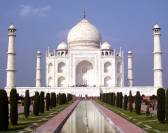
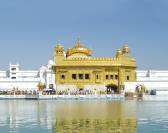
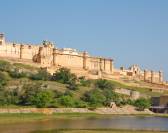
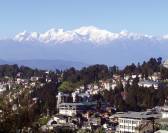
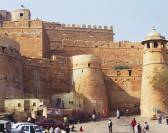
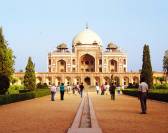
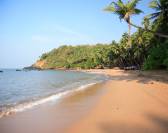
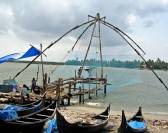
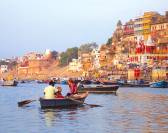
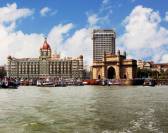
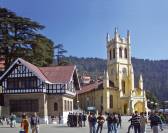

No comments:
Post a Comment